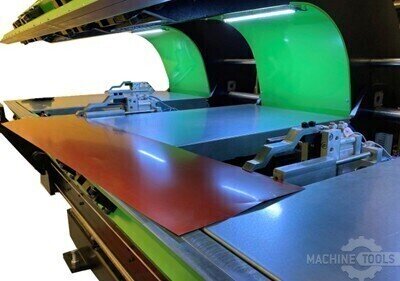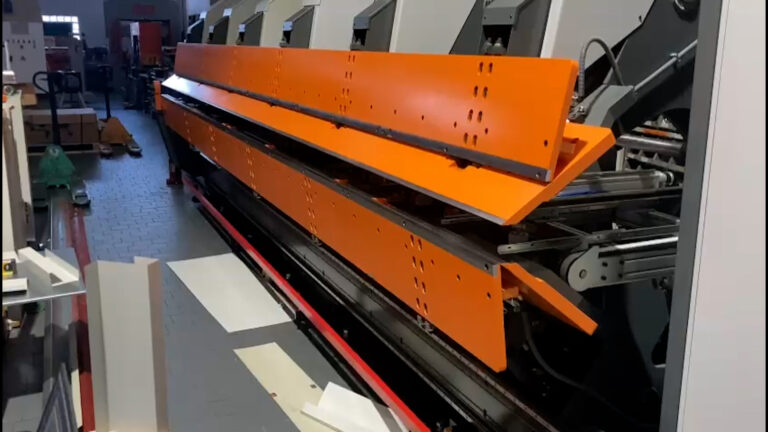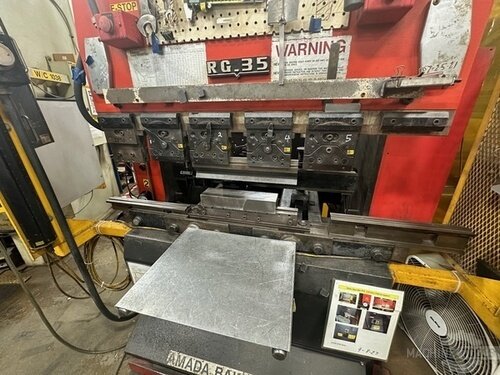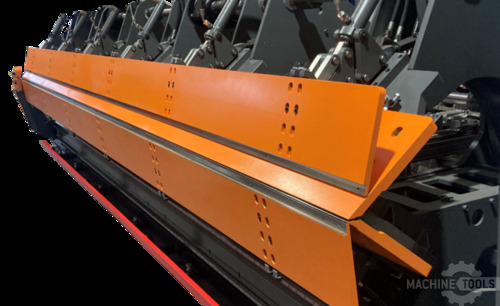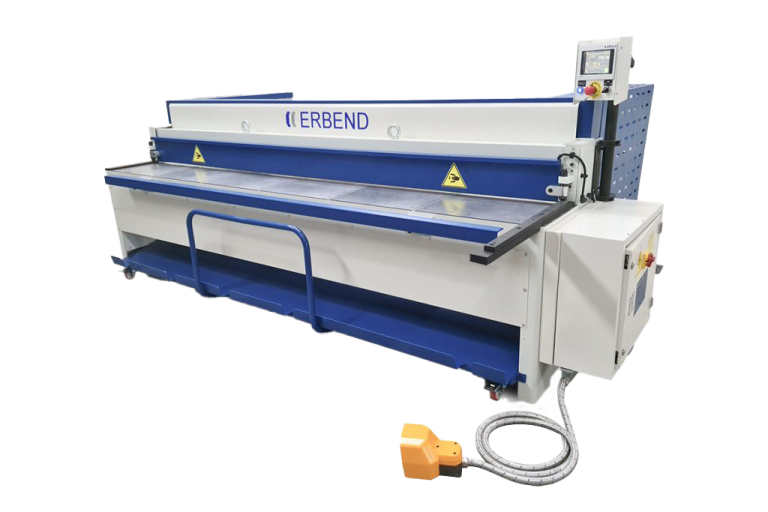From the rugged work yards of southern Chicago to the heart of American fabrication, my journey has always been about helping customers get the most from their machines and their teams. At Mac-Tech, I’ve spent decades working with roofing and metal fabrication businesses—listening to their challenges, evaluating their production lines, and guiding them toward smarter investments. Whether it’s selecting the right folder, integrating coil-fed systems, or optimizing material flow, my goal is to make sure every upgrade translates into real-world efficiency and profitability.
Leveraging Decades of Expertise: Evaluating Your Current Roof Trim Fabrication Process
Before considering any new equipment, it’s vital to take a hard look at your existing process. Are bottlenecks happening at the shear, the folder, or downstream at forming stations? Do operators spend more time handling material than actually folding it? Over the years, I’ve seen many shops struggle not because of worn-out machines, but due to inefficient layouts, outdated controls, or mismatched machine capacities. A holistic evaluation—often just a walkthrough with an experienced partner—can reveal where automation, new controls, or better material flow can deliver the biggest returns. At Mac-Tech, we routinely help customers analyze not just folders, but also their slitters, decoilers, shears, and roll formers, ensuring all parts of the line are working in concert.
Understanding Key Performance Metrics: Speed, Precision, and Waste Reduction in Metal Folding
When comparing folders for roof trim or gutter fabrication, three performance metrics should drive your decision: speed, precision, and waste reduction. Modern folders with advanced controls can dramatically increase throughput, but it’s not just about cycles per hour. Look for features like servo-driven bending beams for faster, repeatable movements and automatic backgauges for precise positioning. Precision is equally critical—tight tolerances reduce scrap and rework, directly impacting your bottom line. Automated material handling features, such as integrated conveyors or robotic offloaders, further reduce waste and labor costs by ensuring consistent part handling and stacking.
Aligning Machine Capabilities with Fabrication Needs: Slitting, Forming, and Folding Demands
Every shop is unique—some run thousands of linear feet per coil, others need flexibility for short runs and custom profiles. The right folder should match your forming length, material thickness, and production mix. For high-volume coil-fed operations, integration with slitters and decoilers is key. If you’re producing complex trim profiles, look for folders with programmable crowning, segmented tooling, and variable folding beams. Shops doing both straight and radius bends may benefit from combi-beam folders, while those focused on high-speed repetitive work might prefer double folders for simultaneous up-and-down bending. I always recommend discussing your current and future product mix with your equipment partner to ensure your investment is both right-sized and future-proof.
Upgrading to Advanced Folders: What to Look For in Coil-Fed and Roll Forming Solutions
Upgrading to a new folder or roll forming line isn’t just about capacity—it’s about unlocking new efficiencies. Advanced folders today feature touch-screen controls, recipe management for repeat jobs, and remote diagnostics. Coil-fed lines with automated material handling can reduce manual labor and material waste, while integrated roll forming and panel bender solutions allow for continuous production with minimal downtime. When comparing options, consider not just the headline specs but also the support, training, and upgrade pathways offered by the manufacturer. At Mac-Tech, we help customers compare not only folders but also shears, slitters, and even downspout roll formers—ensuring your entire production line is optimized for your growth.
STEFA LCS3
Case Studies: Real-World Efficiency Gains from Improved Folder Selection
One Midwest customer recently upgraded from a manual folder to an automated servo-driven system with integrated coil feed. The result? A 40% increase in daily throughput, a 65% reduction in manual handling, and near-zero scrap on complex trim profiles. Another roofing fabricator replaced an aging hydraulic folder with a double-beam system, enabling simultaneous up-and-down bends for box trim and complex flashing—cutting cycle times in half. These are just a few examples of how matching the right folder to your unique production needs can deliver immediate and measurable gains.
Building a Future-Ready Shop: Training, Support, and Long-Term Value
A new folder is a significant investment, but long-term success depends on more than just the machine. Comprehensive operator training, fast parts support, and ongoing software upgrades are all essential. We work closely with customers to ensure their teams are confident on new controls, safety protocols are up to date, and that the entire line—from decoiler to finished part—is running smoothly. Investing in a partner who offers not just equipment, but ongoing support and process expertise, ensures your shop stays competitive for years to come.
Final Checklist: Making the Most Informed Decision for Roof Trim Production
- Evaluate your current process: Identify bottlenecks and inefficiencies.
- Define key metrics: Prioritize speed, precision, and waste reduction.
- Align machine specs: Match folder capabilities to your forming, slitting, and folding needs.
- Consider automation: Look for integrated coil-fed and roll forming solutions to minimize labor.
- Assess support: Choose a partner offering strong training, service, and upgrade pathways.
- Review real-world results: Ask for case studies and references.
- Plan for growth: Ensure your new folder can scale with your business.
Frequently Asked Questions
When is the right time to upgrade a roll former or folder?
If you’re experiencing increased downtime, excessive scrap, or struggling to keep up with demand, it’s time to consider an upgrade. Newer machines offer better controls, automation, and efficiency—often paying for themselves quickly through labor and material savings.
How do servo-driven folders compare to hydraulic systems?
Servo-driven folders provide faster, more precise movement and typically require less maintenance than hydraulic systems. They’re ideal for shops focused on tight tolerances, rapid job changeovers, and high-volume runs.
What’s the difference between a combi-beam and double folder?
A combi-beam folder offers multiple tooling setups for varied bends on a single machine, increasing flexibility. A double folder can bend both up and down without flipping the part, dramatically improving speed on complex profiles.
What are signs a roll forming line is no longer cost-effective?
Frequent breakdowns, excessive manual handling, high scrap rates, and inability to meet delivery schedules are clear signs. Upgrading can reduce these issues and unlock new product capabilities.
How important is training when installing new equipment?
Training is critical. Even the best machine can’t deliver results if operators aren’t confident and efficient. We provide hands-on training and ongoing support to ensure long-term success.
Can a folder be integrated with existing slitters and decoilers?
Absolutely. Many modern folders are designed for seamless integration with upstream and downstream equipment, but it’s important to discuss compatibility and controls with your equipment partner early in the process.
What’s the ROI timeline for upgrading to an automated folder?
Most customers see a return on investment within 12–24 months, thanks to increased throughput, reduced labor, and lower scrap rates. We’re happy to run the numbers for your specific operation.
If you’re ready to take the next step in maximizing efficiency for your roof trim or gutter production, I’d be glad to walk your shop, review options, or arrange a hands-on demo. At Mac-Tech, we’re committed to your long-term success—let’s build the future of your fabrication business together. Call me directly at 414-232-7929 or email pat@mac-tech.com to get started!
Get Weekly Mac-Tech News & Updates


